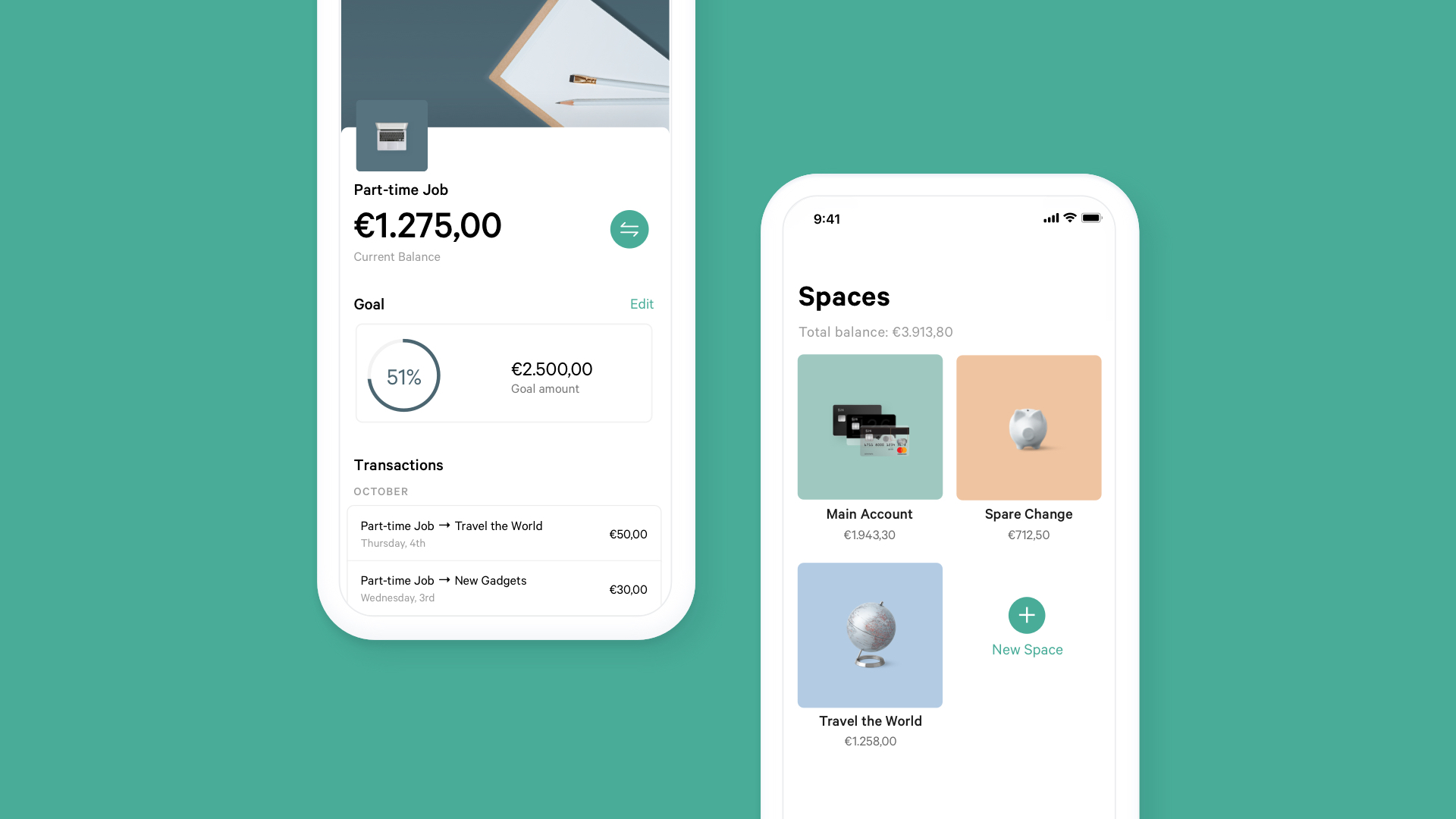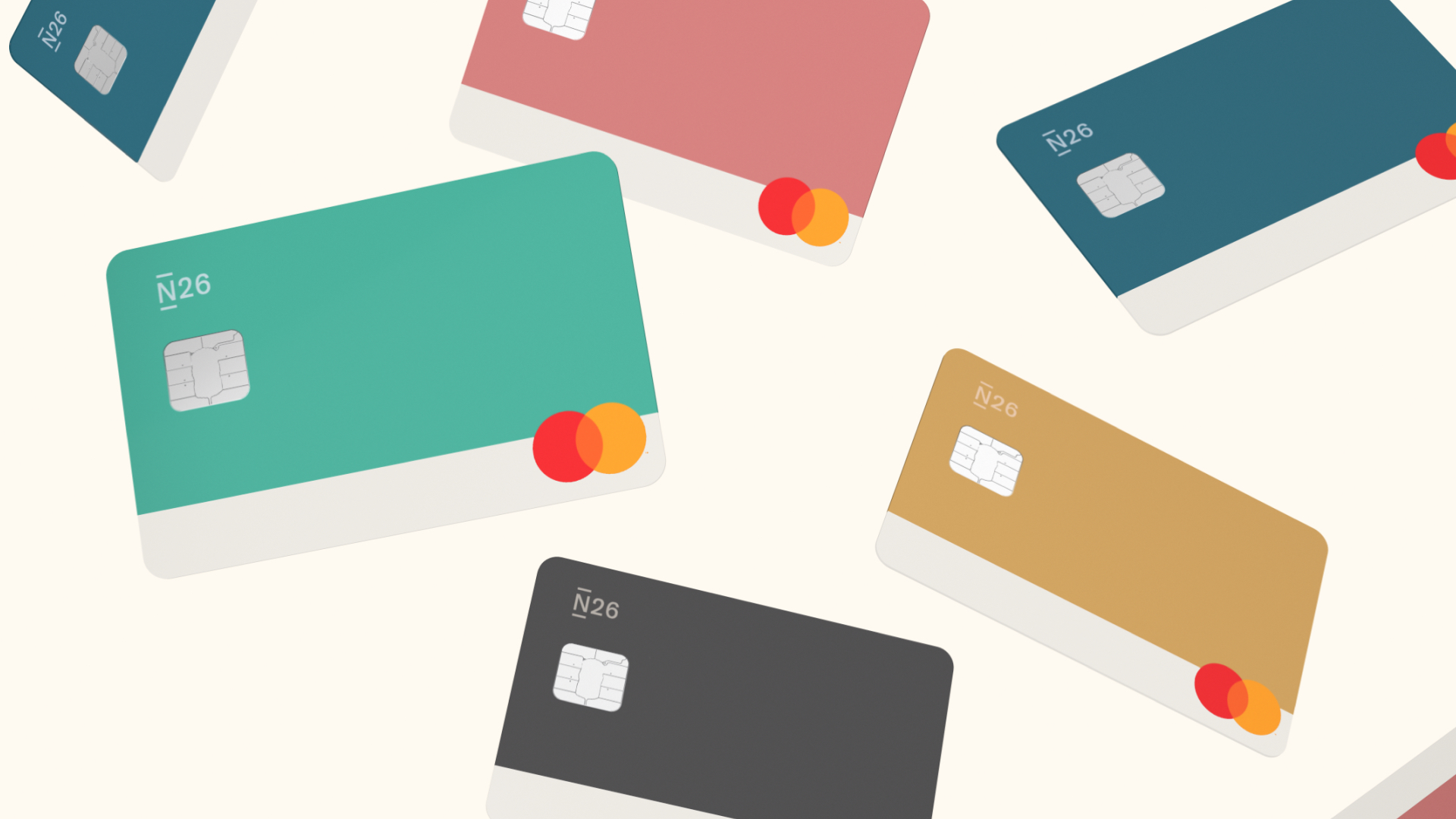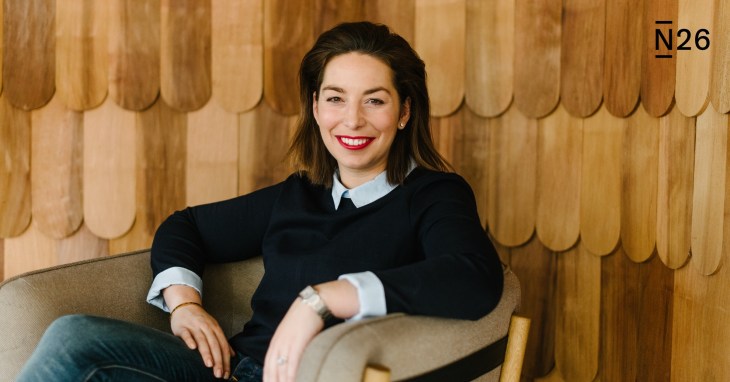Fintech startup N26 recently reached a new milestone as it now has five million customers. The company launched onstage at TechCrunch Disrupt five years ago.
The premise was simple. A young startup wanted to build a bank that didn’t suck. Given the company’s impressive growth rate and its 4.8-star rating in the App Store, it’s clear that N26 is on the right path. Some people finally found a bank that they like interacting with.
I interviewed N26’s Chief Product Officer Georgina Smallwood about how she leads product at one of Europe’s biggest consumer startups. In this wide-ranging discussion, we talk about her role in the organization, how the product and design team communicates and how she finds inspiration for game-changing ideas. The interview was slightly edited for clarity and brevity.
TechCrunch: How did you end up working for N26 and in that position in particular?
Georgina Smallwood: I’ve been in tech for almost 15 years now, mostly on the marketplace side of things. I’ve been really focused on the advertising marketplaces, properties, classifieds, things like that. My product career took me from Australia to Hong Kong, where I set up a business there under another company. I did lots of different things and ended up in Germany working on the IPO for a company called Scout24, which is a property classifieds business. That was about four years ago. After I left, I went back to Australia. But I think that because I’ve worked in Germany before, we had a couple of connections in common.
But what’s really interesting is that I learned about N26 when it was Number26. I was in Germany when they were applying for their banking license and I have this really distinct memory of it because we were very much following the startup community in Germany and in Berlin especially. Rocket [Internet] was kind of blazing at that time and I just thought it was really funny. The narrative around these guys at Number26 changed really drastically. It was really quite funny because on one side there was this story going around that crazy Austrians were applying for a banking license — how ridiculous was that? And then, the next day, it was just awe and inspiration. People would think that these guys don’t take no for an answer, they’re smart, they’re driven and they’re passionate. That’s how you do startups. I was really inspired by this story — I didn’t know the team at all.
And literally a month later, they called me and said: “Hey, have you thought about coming and becoming our director of product?”
At what point did you realize that product was going to be your thing in particular and that you had a special eye when it comes to product?
Interestingly, product management wasn’t a thing when I started in tech. I was an operations manager in adtech, where I worked predominantly. I was on the IAB council and we were talking about click rates and ad formats. It wasn’t until about 2012 that I realized what I was doing was actually building things.
And I think that’s the elements of a product that I really love. The heart of what I’m doing is building something that benefits the user but also benefits the business. From an advertiser’s perspective, whether you’re building a landing page or an ad format, on the business side, you want this to drive revenue, you want people to click on it, to be engaged and complete the form. But from a customer perspective, they clearly need something and they need to see that in the ad. From a software perspective, the topics change but actually the purpose remains the same. You’re still building something that solves something for the user but also takes into account the business outcomes you are trying to achieve.
What’s really interesting, as I moved into the CPO role a year and a half ago, I’m still a product manager. And that’s what I find really awesome about this job. My product is different. Some days, my product is my team and I need to make sure that the team is providing value to the user and is operating effectively as a business.
Other days, I’m diving into a specific product or an initiative that we’re trying to achieve. My role is exactly the same. It’s about building value at that intersection of the business and the user. And it doesn’t change whether you’re a product coordinator or you’re a CPO, it’s just the topics that change.
Tell me about your average week. How much time do you spend managing your team, how much time do you spend managing the roadmap, the features and meeting the deadlines?
I probably spend 50% of my time with my people. A large chunk of that is with my direct reports, making sure that the team is operating smoothly, that everyone is clear. I’m essentially there to unblock anything and work with them. I’m still quite keenly interested in the different products that we’re building. So you’re getting involved asking what we’re up to, making sure that I can make things move faster if possible.
I probably spend 30% of the time with my executive team, my peer group and the founders, working more on the business side of things. What are we doing in the future? We’re also making sure that we’re communicating effectively through the business. As you grow as fast as we have, the way you communicate with your organization needs to change as well.
I’ve been A/B testing a few things around that. I recently started a video blog because I like to have a personal style of communication. I found that it was really difficult as I have to talk to 500 and 600 people in product and tech on a regular basis. I have to communicate my enthusiasm, passion and conviction. So we started doing a video blog on the intranet, we give an update on what’s going on every two weeks.
And the other 20% is probably working on all those random things. I think I would like to attend less meetings than I do. There are probably a couple of meetings that are just about stakeholder management and communication. But during the other 20%, I try to think about what are the things that are really going to leapfrog this company forward.
Let’s step over the delivery of the roadmap for a second and think about: are there any potential game changers that we want to start thinking about? Do we need people to start thinking about different ways… Where is the design? Where is UX going? What are the trends that are coming through on flat design versus textural design? How are we going to get certain things across in the app?
I also think about the users quite a lot — understanding what it is that they think about.
When it comes to game-changing features as you said, who is making the call and how do you decide as a team that you’re going to spend six months working on that and it’s going to change the experience quite drastically?
If that was the case if there was something that we wanted to spend a good chunk of capacity on and it was a bet, that would be a combination of a discussion… it depends on where the idea came from. Sometimes, they come from the team. Sometimes, they come from the product directors. Sometimes, [N26 CEO] Valentin has some great ideas. If we’re going to spend a large chunk of the company’s capacity, that would be a conversation between my directors, Valentin and myself.
So you said 600 people are working under you, is that right?
No, I look after product and design, so I have 120 people.
And then there is the engineering team, I guess?
Yes, and I think there’s maybe 300… under 400 engineers?
I guess it’s always growing. How do you structure your team and how do you interact with 120 people?
When I started there were 10 product managers. It was very different back then. This has been my major focus for the last 12 months from a brain capacity perspective. There’s the product that we want to build, but then if we’re going to be a bank with 100 million users in so many years then we need to have an organization that is set up to do that.
It was one of the major priorities for me, building a product and design organization that could support that kind of ambition. I’ve had a plan for the last 12 months and we’ve settled with a segment and domain model, which is quite similar to the squad and tribe model that Spotify started a long time ago.
Essentially, what we do is that we have segments, which have primary objectives. For instance, we have an acquire segment that obviously acquires customers. And we’re trying to keep that focus quite lean so that they can own the numbers and the objectives they’re trying to achieve. The allocated capacity depends on what they need in that segment. And then the acquire segment group sits under the global customer experience domain.
We have three domains — the global customer experience, platform and market. There’s a director for each domain and they have full autonomy within that. Together, the three of them work cross-functionally to make sure that we stay aligned across the business. One of the things that is interesting about N26 is that our product is our business. N26 is the product, the app is the product. And we need to do a lot of work to make sure that, as we scale, you don’t see the organization in the application.
In the global customer experience domain, we work a lot on the customer journey and experiences across journeys that users want to take within the financial world. On the platform size, we work a lot on security and stability and make sure that we unblock any cool innovation that we want to build from a customer perspective. And then from the market perspective, which we’re just starting at the moment, it’s really a dedicated focus on key markets but also smaller markets and understanding when is the right time to make a decision. It is perhaps a niche call but it’s going to have a lot of impact on that market.
A good example there is when we built the perks product. We built it for the U.S., but with the global infrastructure in mind. If we wanted to roll it out globally we could. But we knew we needed perks to be competitive in the U.S. market. It’s certainly something that I’m glad that we threw in from the start. It really shows that you can get the benefits of what American users expect from a credit institution, you can now get that from a debit institution and it’s much safer from a financial management perspective. That was a market-based decision that we took.

How many people do you interact with in a given week?
On a one-to-one basis, probably 50.
One of the things that is interesting is that I didn’t join N26 to be the CPO. I came to be the director of product. And it was an incredible opportunity for me to step into this role and one that I absolutely love — more than I thought I would. I was slightly nervous before I started. I think I wasn’t sure what being an executive at a company of this size and visibility was going to mean.
But what I realized is that I’m the right person for the role because I’m doing the things that make me me. The reason I got this job is the reason that I’m good at this job. The reason I’m good at my job is that I walk the floor at least twice a week. I walk the entire floor of the office to make sure that I’m seeing where everyone is sitting. If there’s something as small as the light is broken then someone should fix that and they probably should fix that fast. Those small things matter. Those interactions also help in the product development side. Everyone from the top to the bottom is here to create something and they understand the environment that they’re working in and they understand the constraints that they’re working in. You don’t have an executive sitting up in their office and not coming down to see what everyone is doing.
I was very conscious when I took this job that I didn’t want to lose that. What’s difficult is finding out how to scale that and that’s why I started the video blog. I want people to know who I am and what I stand for. I want this organization to be running that way, that they need to know you to understand that. I think that’s one of the struggles of larger organizations.
On a more practical level, what are the important tools that you rely on and the services that you use to do your job and that the entire product and design team uses as well?
We recently did a really large migration of content into Confluence. We have spent a lot of time and effort to make sure that our Jira connects to our Confluence. So we use Confluence to communicate the qualitative side of things. It has content and history and we link documents together to make sure that it’s easy for anyone in the organization to find out the status of a product. You can go into Confluence and type in “additional cards” and that will take you to a single Confluence page where you can move to the dashboard. That’s been really great. It took us about six months for us to get all that content over there. It has certainly made communication a lot easier. If you just need to ask a question and you just need to have an update on something, you don’t necessarily need to ask the person. You can just go to the Confluence page and there will be information there.
We’re very data-driven. And what’s interesting is that when you try to be a data-driven product organization, you need to make sure that all the data is coming in the right format. Sometimes, in other companies that I’ve been in, there was so much data but no clarity over what data is important and what isn’t. There’s a balance between an excessive amount of data and having enough to make a decision.
We just recently built a product impact dashboard. It’s a combination of product data and financial data. It’s really cool because it’s one of the things that is difficult from a traditional banking perspective. And we use that information to make decisions much faster than we would have otherwise.

When it comes to planning the roadmap and assigning tasks to the team, what do you use?
We use Jira and Confluence for that as well. We created a product portal. When other parts of the organization have ideas, they can submit something through the portal. They have a couple of things to fill out and validate for us — what is the market impact, how many users does it affect, what’s the metric that we’re changing as far as the company’s OKRs are concerned.
We use that and we validate that on an ongoing basis. We’ve been doing quarterly planning and now we’re starting to move to a rolling three-month planning model so that we can give more control back to the teams. We just make sure that we are validating the information based on the right company goals that we’re looking for.
You talked about data. How many decisions are driven by data, user testing and feedback from the users?
I would say it’s 33/33/33. The first third of the information that we make decisions on is data — product data, financial data and impact-based data. The second third is user research and conversations with users, NPS surveys, surveys in the app, customer support or social media channels.
The third part is that there’s a healthy dose of intuition and gut feeling. You can’t have gut-feeling intuitions without user research and data, but I think brilliant products get created when people use that and then try hypotheses on top.
How much do you pay attention to other apps and companies — it could be competitors but not only direct competitors — that inspire you?
We look at them all the time. I think everyone does. I think from a direct competitor space, I try not to focus too much. One of the challenges that we’re all facing at the moment is that banking is commoditized. There are variations on a couple of different functionalities. I think what’s really cool is when you look at really clever learning applications or children games. Those apps create habits and you can be inspired by other people’s design. Those are the things that I look at all the time. When we talk about virality and feedback loops, we try to look at the best-in-breed — who does that and how did they get people to develop a habit that is beneficial to them?
We do look at them all the time. We have a very passionate Slack channel. What’s really cool is that some of the people who moved on from N26 have gone on to start some really cool startups. Some of that passion comes through in some cool stuff that people are doing outside the organization as well.
